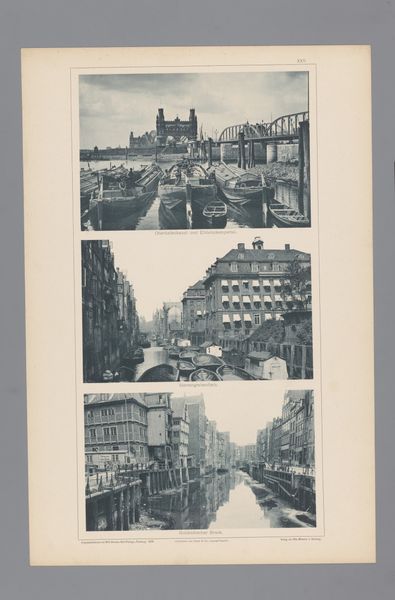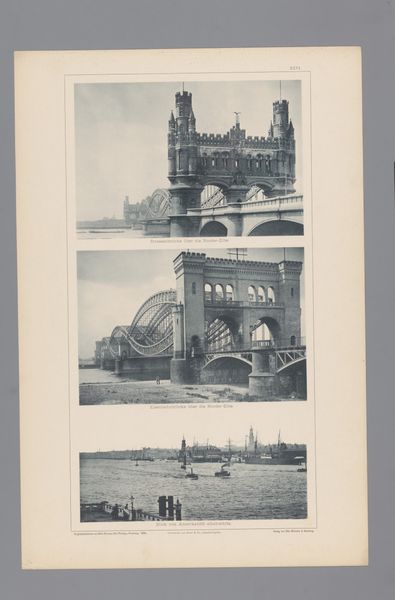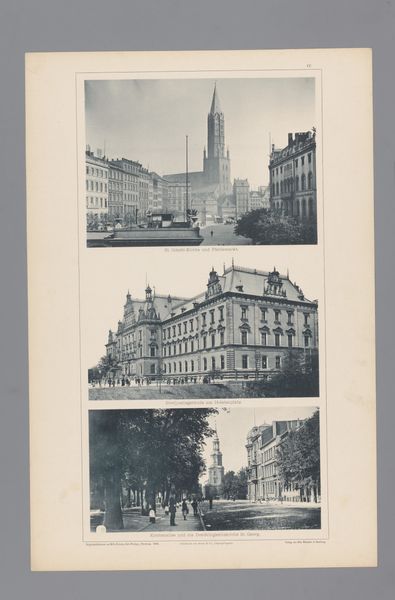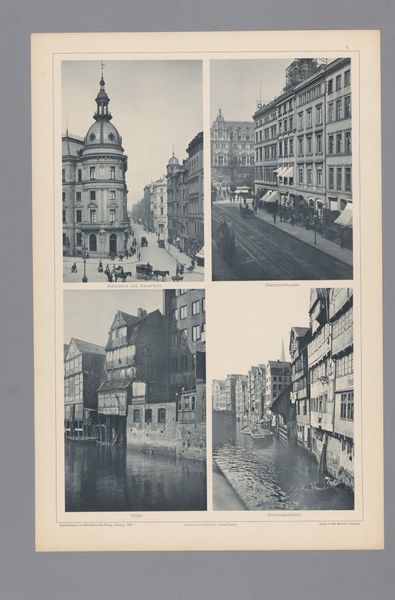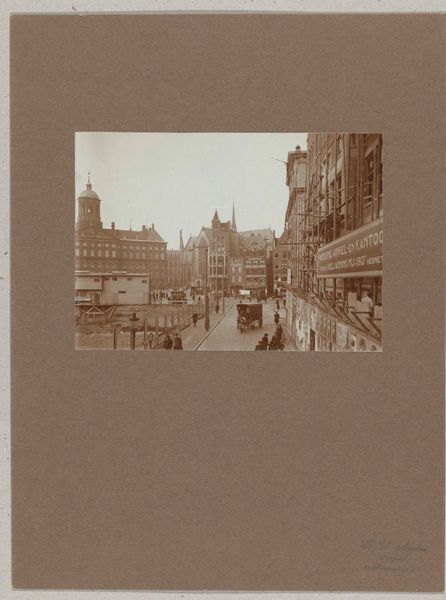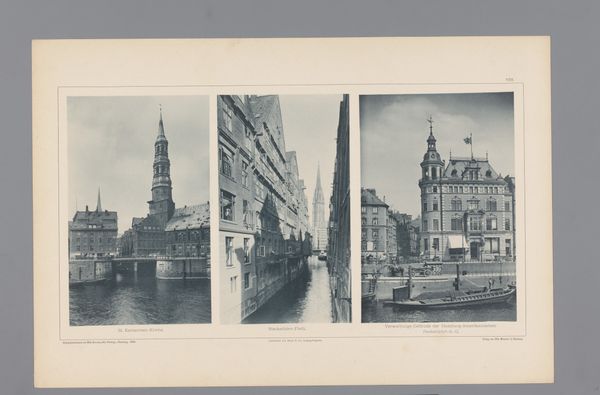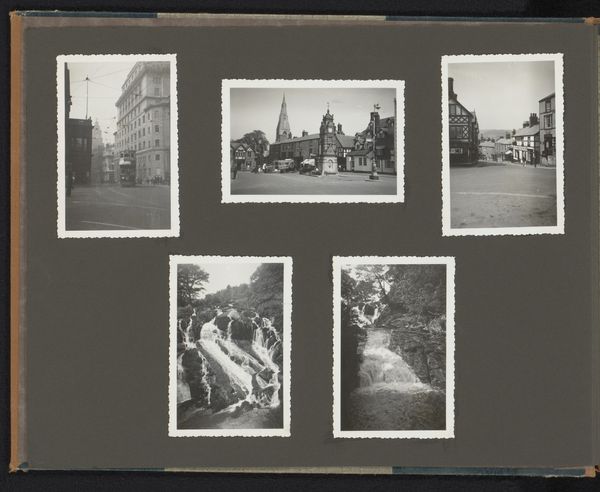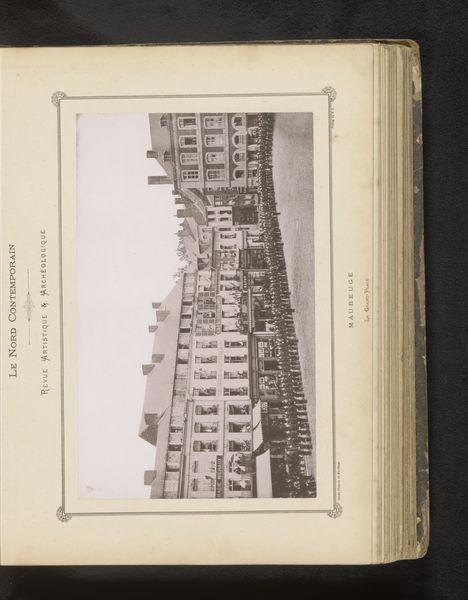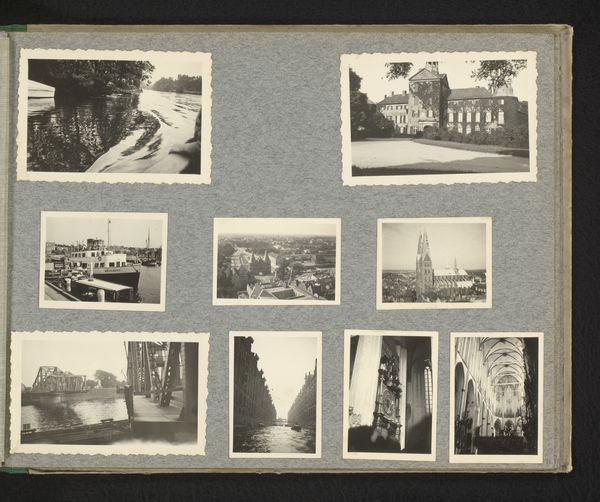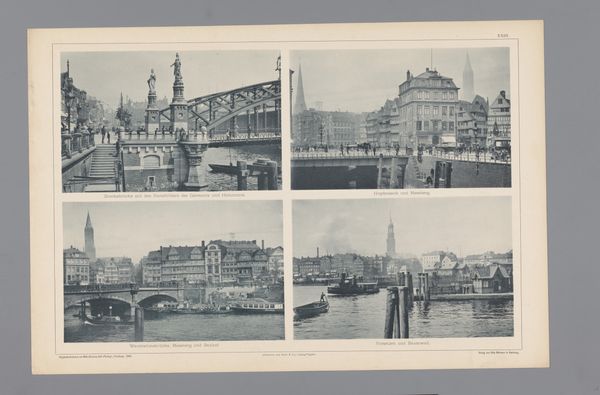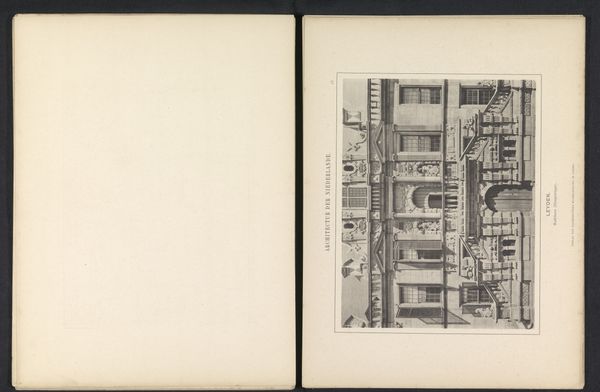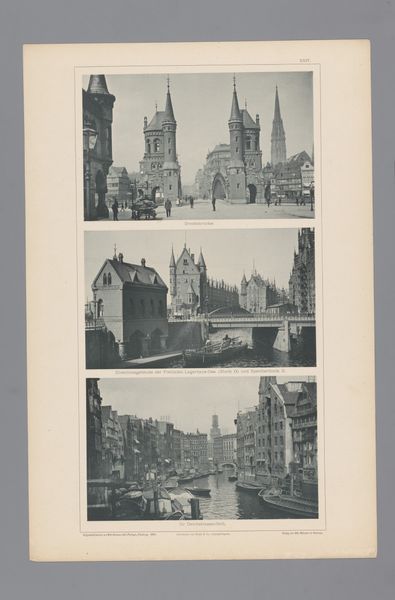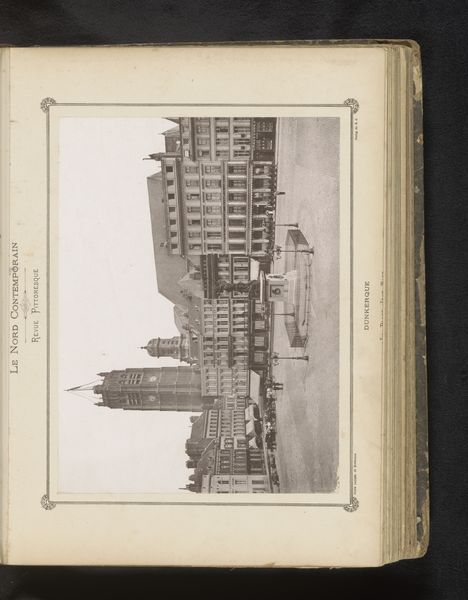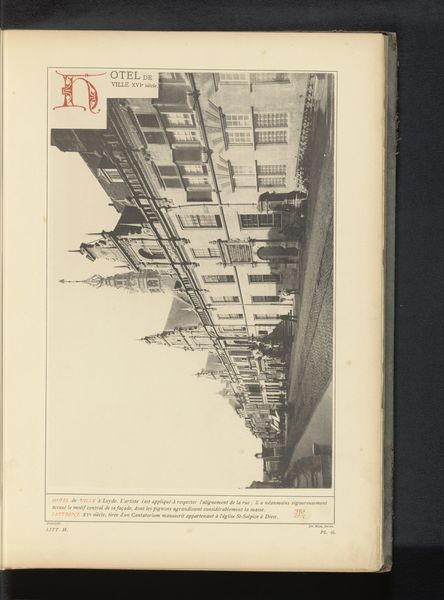
Drie gezichten op Hamburg, afgebeeld het Dovenhof en de Kornhausbrücke, het Messbergplein, het Johanneum en Speersort 1894
0:00
0:00
print, photography, albumen-print
#
pictorialism
# print
#
photography
#
cityscape
#
street
#
albumen-print
Dimensions: height 490 mm, width 330 mm
Copyright: Rijks Museum: Open Domain
Editor: This is "Drie gezichten op Hamburg," or "Three Views of Hamburg," a photograph from 1894 by Wilhelm Dreesen, printed with the albumen process. The triptych layout of the city scenes, and the soft focus… there’s a deliberate feeling of nostalgia evoked for me, as if viewing memories rather than current scenes. What symbolic significance do you find in these urban images? Curator: The city itself is the central symbol. Notice how each view is carefully chosen: a bridge connecting different points, a bustling marketplace, and a formal, almost governmental street. These aren’t just places; they're representations of connection, commerce, and control – the foundational pillars of a city’s identity. Consider how bridges often appear in times of trauma - visual metaphors of hope in connecting divides after moments of conflict. Editor: That’s fascinating! It’s like Dreesen is documenting the very essence of what makes Hamburg "Hamburg" at the end of the 19th Century. But why choose photography, particularly an albumen print? What does that add to the symbolic weight? Curator: The albumen print, with its sepia tones and soft details, creates an idealized, almost romantic vision of the city. Photography, thought of as modern at this time, captures a supposedly objective moment in history, while the printing process adds layers of emotional resonance. Editor: So, it's not just a photograph; it's a constructed memory, a deliberate interpretation of the city's identity and cultural memory, that the photograph seeks to preserve? Curator: Exactly! The act of selecting these views, framing them in this particular way, speaks volumes about what Dreesen – and perhaps Hamburg itself – valued and wished to preserve. Look closer at how he captures movement, the feeling of city, while leaving elements intentionally soft or obscure... Consider the use of the frame itself - 3 panels indicating past, present, future... a sort of 'Hamburg then and now'. How did one of the busiest trade centers and port cities of Europe reflect then the hopes of its people? Editor: That gives me a completely different perspective on the piece! I was so focused on the aesthetic qualities; I missed the underlying symbolism entirely. Thanks, that's incredibly insightful. Curator: And now perhaps we see these symbols anew... It’s about how cities, through art like this, actively construct and maintain their self-image, perpetuating particular ideas across generations, through powerful, considered, arrangements.
Comments
No comments
Be the first to comment and join the conversation on the ultimate creative platform.
